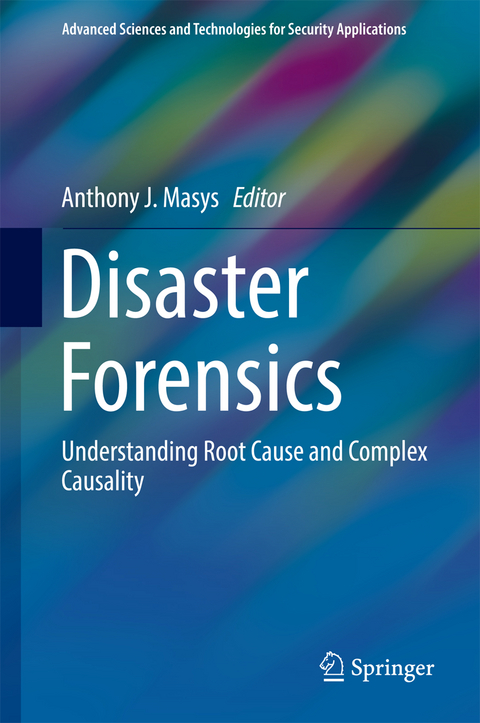
Disaster Forensics
Springer International Publishing (Verlag)
978-3-319-41847-6 (ISBN)
Recently the global threat landscape has seen the emergence of high impact, low probability events. Events like Hurricane Katrina, the Great Japan Earthquake and tsunami, Hurricane Sandy, Super Typhoon Haiyan, global terrorist activities have become the new norm. Extreme events challenge our understanding regarding the interdependencies and complexity of the disaster aetiology and are often referred to as Black Swans. Between 2002 and 2011, there were 4130 disasters recorded that resulted from natural hazards around the world. In these, 1,117,527 people perished and a minimum of US$1,195 billion in losses were reported. In the year 2011 alone, 302 disasters claimed 29,782 lives; affected 206 million people and inflicted damages worth a minimum of estimated US$366 billion.
Individual and Societal Risk (RiskIS): Beyond probability and consequence during Hurricane Katrina.- Application of problem inversion to cascading critical infrastructure failure.- Heroes and Villains in Complex Socio-Technical Systems.- Patient Safety and Disaster Forensics: understanding complex causality through Actor Network ethnography.- The Fog of Battle in risk and crisis communication: Towards the goal of interoperability in the digital age.- Disaster Forensics: Governance, Adaptivity and Social Innovation.- Disasters and Mishaps: The Merits of Taking a Global View.-Dynamics of information flow before major crises: Lessons from the collapse of Enron, the subprime mortgage crisis and other high impact disasters in the industrial sector.- Climate Change and Disaster Forensics.- The Complex Dynamic Causality of Violent Extremism: Applications of the VERA-2 Risk Assessment Method to CVE initiatives.- Staying alive in the business of terror.- Counter-terrorism and Design Thinking: Supporting strategic insights and influencing operations.- Economic Disruptions, Business Continuity Planning and Disaster Forensic Analysis: The Hawaii Business Recovery Center (HIBRC) Project.- An Event-Driven, Scalable and Real-Time Geo-spatial Disaster Forensics Architecture: Decision Support for Integrated Disaster Risk Reduction describes.- Advances in Economics and Disaster Forensics: A Multi-Criteria Disaster Forensics Analysis (MCDFA) of the 2012 Kahuku Wind Farm Battery Fire on Oahu, Hawaii.-Complexity and Disaster Forensics: Paradigms, Models and Approaches for Natural Hazards Management in the Pacific Island Region.
| Erscheinungsdatum | 13.09.2016 |
|---|---|
| Reihe/Serie | Advanced Sciences and Technologies for Security Applications |
| Zusatzinfo | XVII, 409 p. 41 illus., 30 illus. in color. |
| Verlagsort | Cham |
| Sprache | englisch |
| Maße | 155 x 235 mm |
| Themenwelt | Naturwissenschaften ► Physik / Astronomie |
| Technik ► Bauwesen | |
| Schlagworte | Case studies of disasters • Complexity of the disaster aetiology • Environmental Law/Policy/Ecojustice • Forensic approaches to disaster study • Forensic investigations of disasters • Integrated research on disaster risk • Man-made Disasters • Methodology of the Social Sciences • Natural Hazards • Physics and Astronomy • Root Cause • Security Science and Technology • Strategies in managing disasters • Systems Thinking in disaster management |
| ISBN-10 | 3-319-41847-5 / 3319418475 |
| ISBN-13 | 978-3-319-41847-6 / 9783319418476 |
| Zustand | Neuware |
| Informationen gemäß Produktsicherheitsverordnung (GPSR) | |
| Haben Sie eine Frage zum Produkt? |
aus dem Bereich


